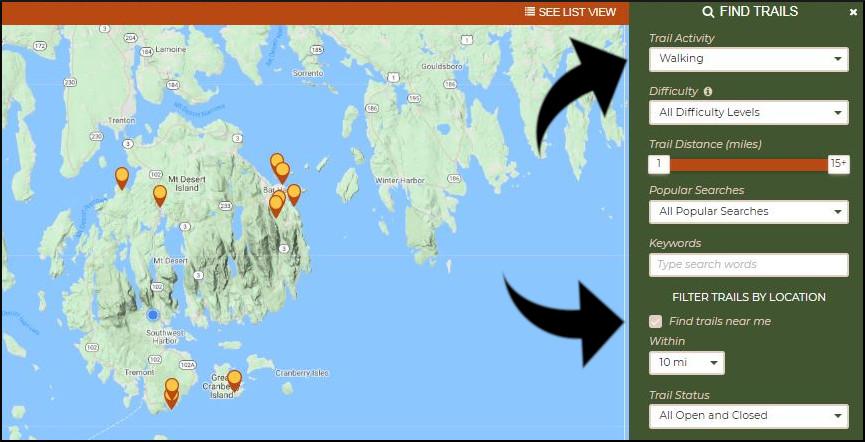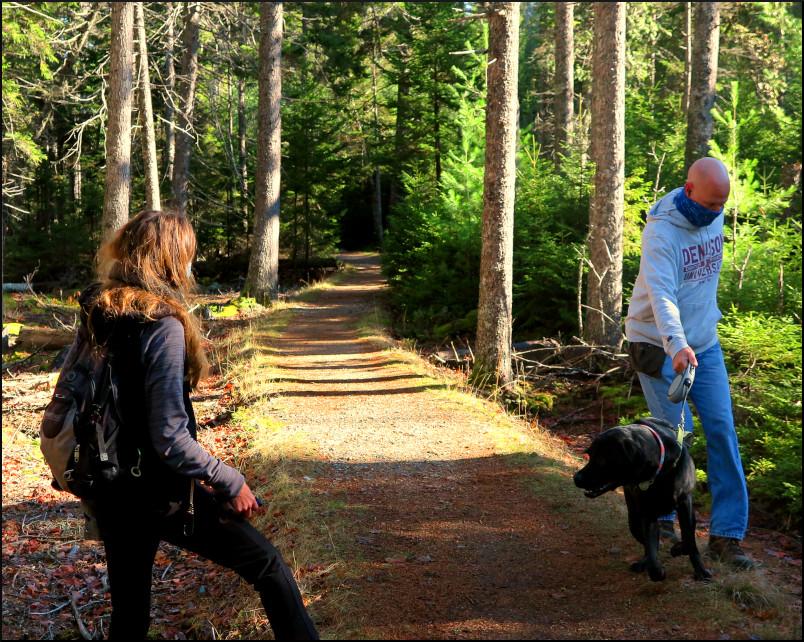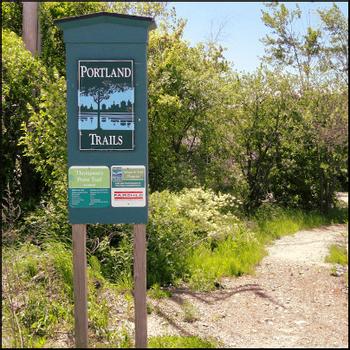
One of the most difficult consequences of the COVID-19 pandemic is the separation it has caused among friends and families. With physical distancing and stay-at-home orders, we spend much more time secluded in our homes and much less time around others. A great way to help combat the isolation is to head out for a walk around town. The benefits of walking are numerous. The fresh air and physical exercise can reduce stress and boost your immune system, plus walking around town can serve as a reminder that you are not alone!
Even out of doors, however, there is a risk of COVID-19 transmission. But if you follow the practices below, you can enjoy the fresh air, get some physical activity into your day, and lessen your isolation by greeting your neighbors at a safe distance.
Before you head out the door, do a bit of research to familiarize yourself with any COVID-specific guidelines that may be in place at the location you wish to walk, such as parking restrictions, closed facilities, and facilities that are or are not being actively sanitized. Other trails like the Orono Bog Boardwalk have closed entirely due to COVID. Know before you go!
In addition, find alternative places nearby where you would enjoy a walk. If you drive to the trailhead and the parking lot at your first choice location is crowded, the trail is at capacity and physical distancing will be difficult. Time check out a different trail! If you ditch the car and walk to and along town paths directly from your doorstep, be aware of how many other people are around you, and if you find it increasingly difficult to keep physically distant from other walkers, you can make a u-turn and head to your second choice location if you’ve scoped out a plan B in advance.

Walking in town, there are many more surfaces that you could come in contact with compared to hiking deep in the forest. Restrooms, benches, picnic tables, playground equipment, and even gates, handrails, and informational kiosks - most such things are likely not sanitized (and some facilities may be entirely closed for the pandemic, such as restrooms). If you are at high risk you may want to avoid unsanitized surfaces entirely. If you do utilize any such public equipment, use your hand sanitizer and/or wipes (at least 60% alcohol) before and after any contact with any public surfaces. If you use wipes, dispose of them properly in trash cans if available, otherwise stick them in your pocket to dispose of at home.
As public restrooms may be closed, or if open they may not necessarily be sanitized, be sure to use your own bathroom before leaving home to minimize the need to use public restrooms!
Face coverings are a must if walking through in-town locations. In Maine, face coverings should consist of a medical mask or other mask designed to stop COVID transmission. Many towns require mask-use in their village centers no matter the crowding level. Villages, town parks, and playgrounds tend to be high-use and mask use is highly advisable regardless of local requirements. Furthermore, many spaces in towns are considered public and Maine now has a mask mandate for any public place regardless of the ability to maintain physical distance. If you find yourself along a quiet stretch off the public way with nobody else about and choose to pull your mask down, keep it handy and don’t forget to put it back on and pull it up over your mouth and nose as you approach others, or if you return to public spaces.
Walking is among one of the safest activities you can do during the pandemic, but that is only if you maintain physical distancing guidelines. This means keeping at least 6 feet from others at all times. You will likely encounter other recreationalists as well, in addition to other walkers. Respiratory droplets can travel further distances from runners and bikers, so while you are out walking it’s best to maintain a 10-12 foot distance from those pursuing more vigorous physical activity.

It is, of course, much easier to maintain such distance if you are in areas that have fewer people about, so avoid those locations that are likely to be more crowded, or seek them out at times when there are likely to be few other people there.
If you walk as a way to visit with friends, maintain at least a 6 foot distance between people in your group if they are not in your pod, and regardless of who you walk with, keep your groups small. A larger group is more difficult for others to pass at a distance. If you see others you know during your walk, don’t all clump up together in the middle of the path to stop and chat, blocking the way for others, or stand on either side of the path requiring others to pass between you. Instead, step off to the side.
Dogs need to social distance as well! Use a 6 foot leash (avoid retractable leashes), and keep your dog close while passing others. Though it’s tempting, it’s best not to pat other dogs even if they are friendly and you know them, or let others pat your dog, to avoid any potential transfer of the virus. And as always, remember to scoop the poop and dispose of properly; bring poop bags and take them home with you if public trash cans aren’t available.

The villages and parks through which trails travel likely have their own COVID-related guidelines. The Maine Bureau of Parks and Lands, for instance, has reduced the number of spaces in parking lots , limited use of some restroom facilities, and requested that visitors shorten the length of their stay at coastal state parks. Keep your eyes open on your walk to any signage posting COVID guidelines at facilities and on the trails, and follow the posted protocols.
If you have a cough, shortness of breath, muscle aches, a sore throat, or other COVID symptoms, stay home. Even outside, if there is a possibility you have the virus you would be putting others at risk by spending time in public places, particularly in village centers and public parks where the concentration of people is higher. Better to stay home and wait it out than to put others in peril!
You should also stay home if you have recently visited a particularly high-risk location. If you are coming to enjoy New England from out-of-state, familiarize yourself with the current guidelines for traveling to Maine. Visitors to the state need to get tested or quarantine upon arrival unless traveling from an exempted state, but those states that are exempted from this requirement are rapidly decreasing.
Take into consideration how your actions might impact others around you. Show courtesy to fellow walkers who may very well be out for a walk to de-stress during these anxious times. It is important to share open space with your neighbors, be aware of your surroundings and step to the side when necessary.
If you stand in the middle of a pathway or sidewalk chatting or texting on your phone, it will be difficult for others to pass by at a safe distance, or possibly require them to walk into the road to get by. Step to the side if you need to stop. Next to roadways, adults should give way to families with children, moving to the road side of the path to pass by at at least a 6 foot distance, to prevent those with kids from having to squeeze close to the road. Give way to older folks and those less agile than you, stepping aside, off the path if necessary, so they can maintain their stride.
If you are visiting a popular location, limit your time and move on after a reasonable duration so others can enjoy it too without overcrowding.
By practicing walking etiquette and using common sense, you can get out and moving in the fresh air while still showing respect for those around you, helping to keep us all healthy, and improving your own spirits and those of other walkers you encounter along the way.
Success! A new password has been emailed to you.